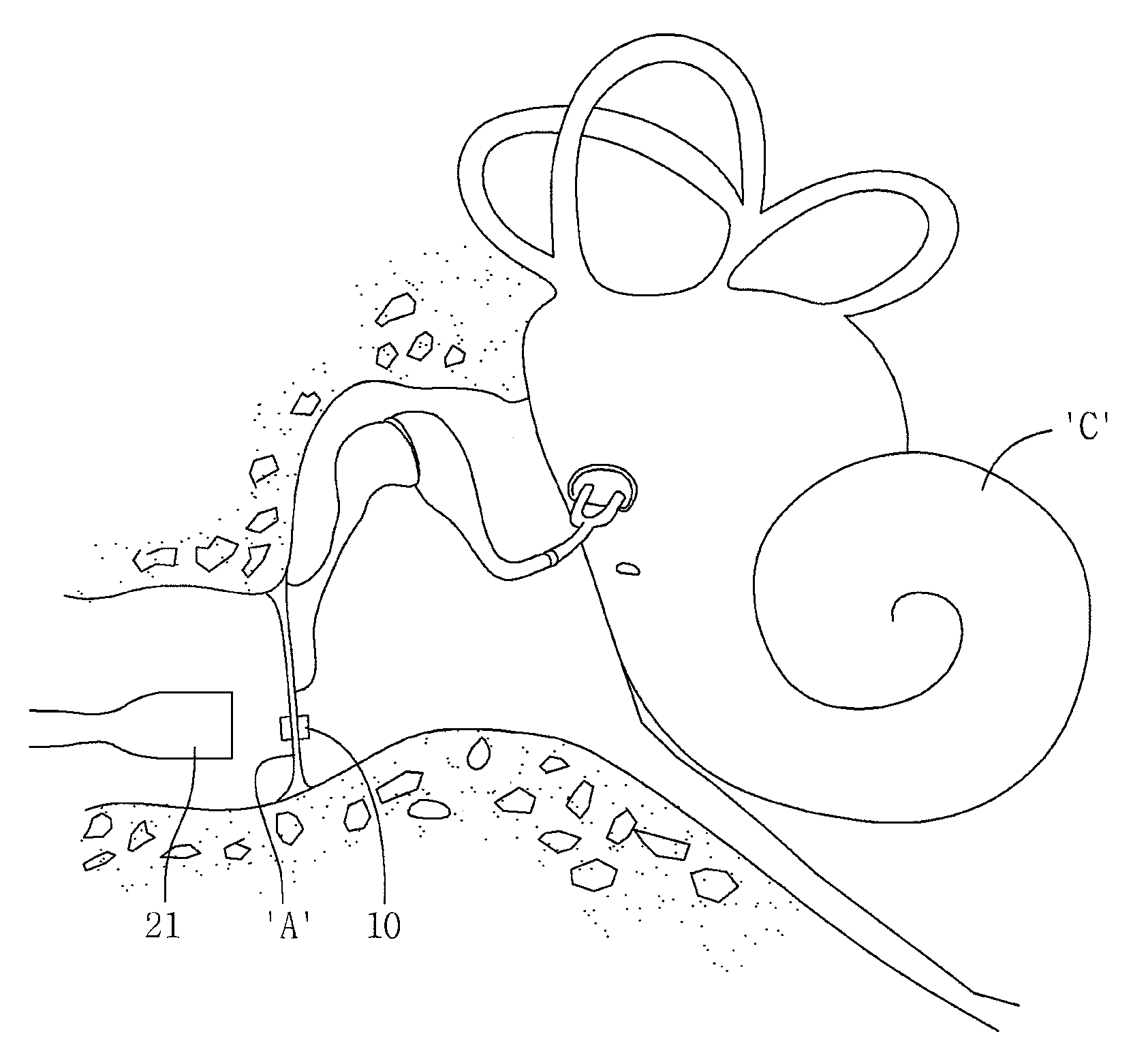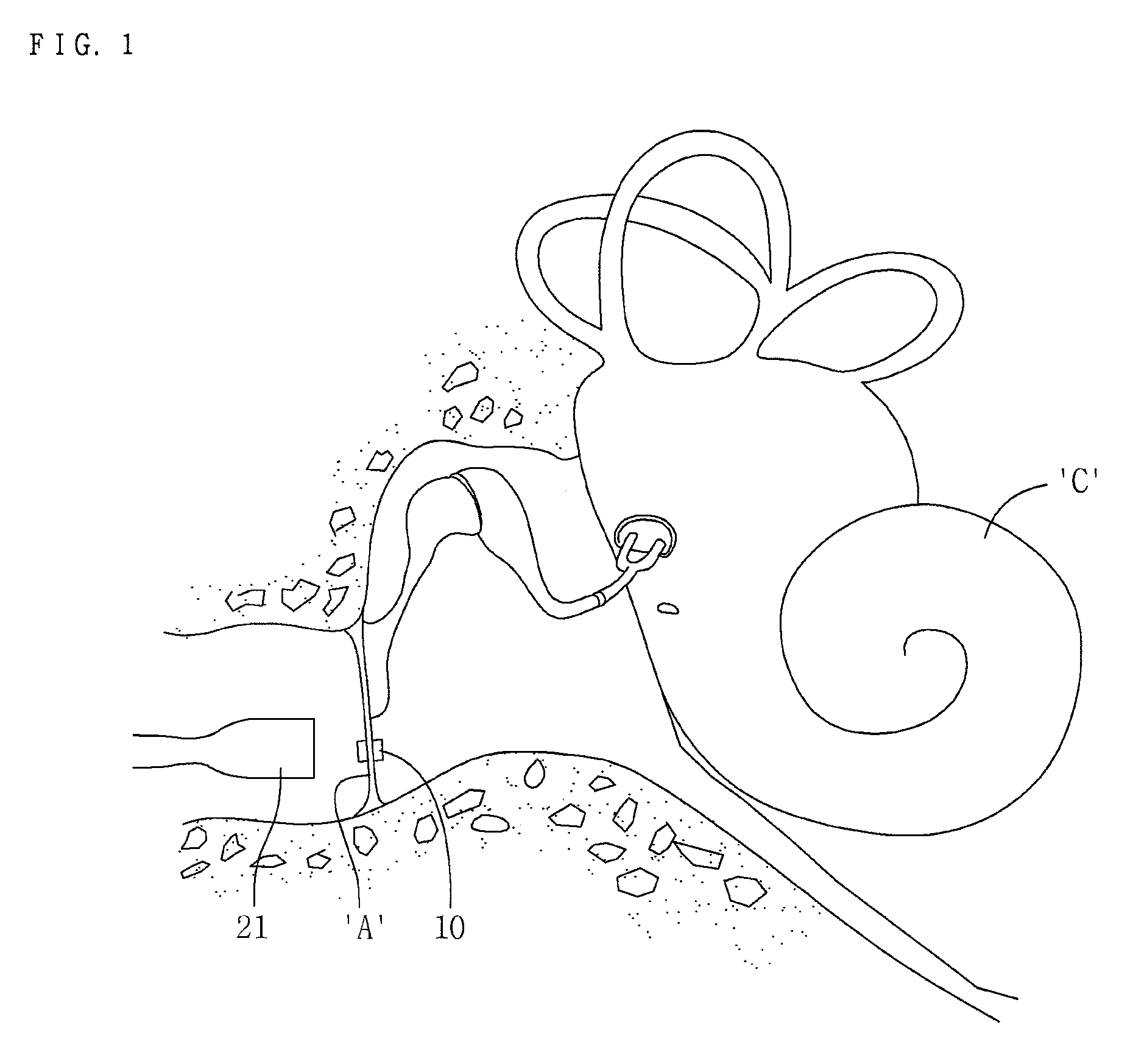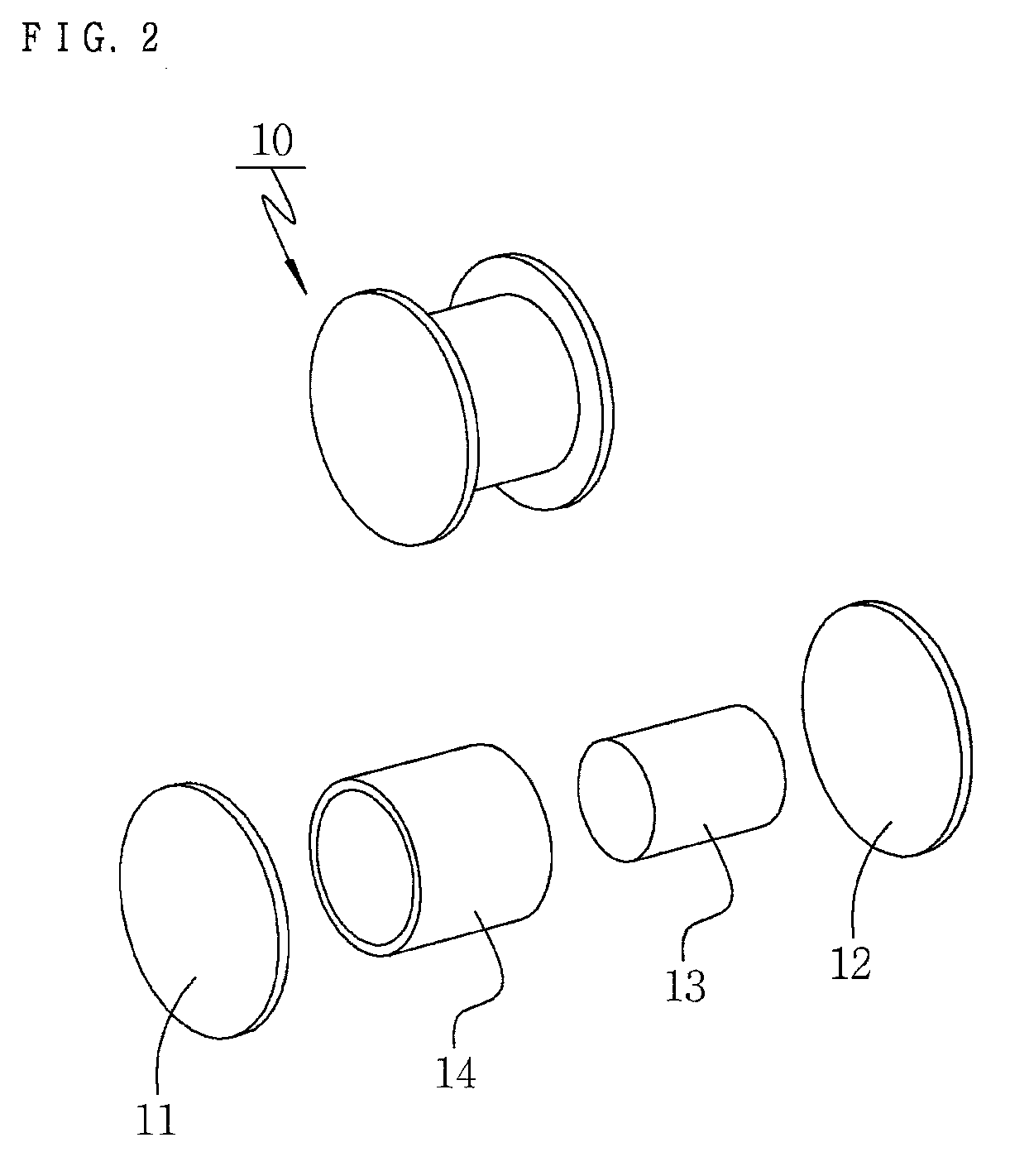Trans-tympanic membrane transducer and implantable hearing aid system using the same
- Summary
- Abstract
- Description
- Claims
- Application Information
AI Technical Summary
Benefits of technology
Problems solved by technology
Method used
Image
Examples
first embodiment
[0062]Here, FIG. 5 illustrates the construction of an implantable hearing aid system having a trans-tympanic membrane transducer according to the invention. Referring to FIG. 5 together with FIG. 2 above, the implantable hearing aid system includes a transducer 10, an insert unit 20 and a hearing aid body 40. The transducer 10 includes, as illustrated above with reference to FIG. 2, a pair of flange covers 11 and 12, a magnetic member 13 and a casing member 14. The insert unit 20 is inserted in the auditory ear canal D, spaced apart from the transducer 10 at a predetermined distance, so as to vibrate the transducer 10 in response to signals supplied from outside. The hearing aid body 40 is connected to the insert unit 20 through a conducting line 30 so as to supply the signals to the insert unit 20.
[0063]The flange covers 11 and 12 and the casing member 14 are part of a miniature magnet, and can be made of titanium or equivalent biocompatible material. The flange covers 11 and 12 an...
second embodiment
[0069]FIG. 6 illustrates the construction of an implantable hearing aid system having a trans-tympanic membrane transducer according to the invention. Referring to FIG. 6 together with FIG. 2 above, the implantable hearing aid system of this embodiment includes a transducer 10 extending through a tympanic membrane and a totally-implantable hearing aid transmitting sound signal to the transducer 10. The transducer 10 includes, as described above with reference to FIG. 2, a pair of flange covers 11 and 12, a magnetic member 13 and a casing member 14. The totally-implantable hearing aid includes an implantable microphone 50, an implantable hearing aid module body 60, a driving coil 70 and a fixing part 80. The implantable microphone 50 is implanted in a temporal bone of the patient body, and the implantable hearing aid module body 60 is connected to the implantable microphone 50 through a conducting line 51. The driving coil 70 is fixedly implanted in the middle ear cavity, and is conn...
third embodiment
[0072]FIG. 7 illustrates the construction of an implantable hearing aid system having a trans-tympanic membrane transducer according to the invention. Referring to FIG. 7 together with FIG. 2 above, the implantable hearing aid system of this embodiment includes a transducer 10 extending through a tympanic membrane and a partially-implantable hearing aid transmitting sound signal to the transducer 10. The transducer 10 includes, as described above with reference to FIG. 2, a pair of flange covers 11 and 12, a magnetic member 13 and a casing member 14. The partially-implantable hearing aid includes a hearing aid module body 90, a receiver 91, a driving coil 93 and a fixing part 94. The hearing aid module body 90 is disposed outside the patient body, and includes a microphone (not shown). The receiver 91 receives the output signal from the hearing aid module body 90, and the driving coil 93 is fixedly implanted in the middle ear cavity and is connected to the receiver 91 through a cond...
PUM
 Login to View More
Login to View More Abstract
Description
Claims
Application Information
 Login to View More
Login to View More - R&D
- Intellectual Property
- Life Sciences
- Materials
- Tech Scout
- Unparalleled Data Quality
- Higher Quality Content
- 60% Fewer Hallucinations
Browse by: Latest US Patents, China's latest patents, Technical Efficacy Thesaurus, Application Domain, Technology Topic, Popular Technical Reports.
© 2025 PatSnap. All rights reserved.Legal|Privacy policy|Modern Slavery Act Transparency Statement|Sitemap|About US| Contact US: help@patsnap.com



